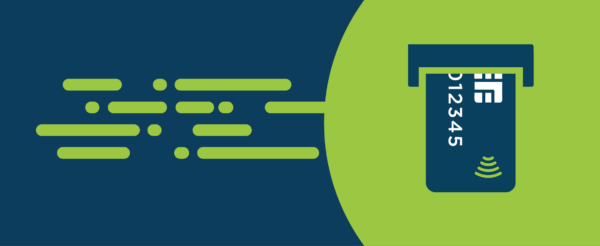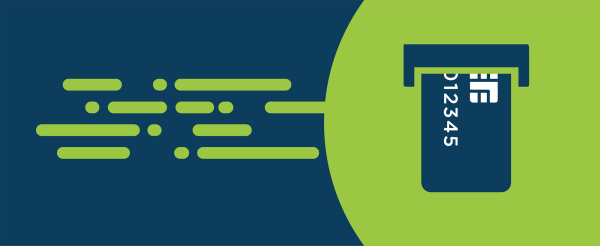EMV® Level 1 (L1) and Level 2 (L2) testing assesses if EMV acceptance devices, mobile payment form factors and EMV Chip cards meet the EMV Contact and Contactless Specifications for performance and compatibility.
In this post, Arman Aygen, EMVCo Director of Technology, explains the basics of EMV L1 and L2 and why they play a crucial role in supporting seamless and secure in-store payments for consumers and merchants around the world.
What are EMV L1 and L2?
EMV L1 refers to the communication protocols that enable the exchange of data between the payment instrument and acceptance device. This includes the mechanical, electrical and radio frequency (RF) interfaces.
EMV L2 refers to the software component, commonly known as the ‘kernel’ or ‘payment application’, that resides on an acceptance device or card and mobile respectively. This software contains the set of functions that provide the processing logic along with necessary data to perform an EMV contact or contactless transaction.
What products does EMVCo assess? And are there different requirements for EMV L1 and L2 approvals?
Yes. EMVCo has defined specific EMV L1 and L2 testing processes to assess if products including EMV acceptance devices, mobile payment form factors and EMV Chip cards meet the EMV Contact and Contactless Specifications. The distinctions and coverage of these processes are outlined below:
- EMV acceptance devices
EMV acceptance devices are products that enable merchants to accept EMV contact or contactless payments. These include traditional Point of Sale (POS) terminals, as well as TapToMobile solutions – which allow merchants to accept contactless payments directly using near field communication (NFC)-enabled devices such as smartphones without the need for an additional connected device, dongle or attachment.
EMV L1 testing assesses the compliance of the acceptance device with the communication protocols defined within the EMV Chip Contact and Contactless Specifications. These cover the transfer of data between the acceptance device and the payment instrument (such as chip cards, smartphones, and smartwatches).
The testing is also designed to confirm how close the payment instrument needs to be to the acceptance device to enable the successful exchange of payment data for a contactless transaction. To support emerging payment acceptance form factors such as TapToMobile, EMVCo has published a dedicated L1 Reduced Range approval process.
In addition, EMV L2 testing assesses the compliance of the acceptance device with the software features defined within the EMV Chip Contact and Contactless Specifications.
EMVCo has defined the Contact Kernel approval process for contact. And for contactless products, EMVCo has launched an approval process for the new EMV Contactless Kernel (EMV Contactless Specifications for Payment Systems: Book C-8 – Kernel 8 Specification).
To ease the transition for stakeholders deploying the new EMV Contactless Kernel, the approval process supports two approaches. The EMV Contactless Kernel can be tested as a full contactless acceptance device, which reflects the approach currently used for other available contactless kernels. Additionally, EMVCo has introduced standalone testing of the EMV Contactless Kernel itself to support different deployment options for products in the field that are already approved.
Importantly, the EMV Contactless Kernel Specification is flexible to support different implementation options. For example, the EMV Contactless Kernel supports a ‘split architecture’ that allows processing and functions to be performed in different locations. However, the EMVCo approval process does not change regardless of whether this functionality is implemented.
- Mobile payment form factors
NFC-enabled mobile devices such as smartphones, tablets and smartwatches – as well as other form factors such as rings and bands – can be used to perform EMV contactless transactions in-store. To help promote a good consumer experience, EMVCo has defined a dedicated L1 testing process for NFC-enabled smartphones and wearables. EMVCo has also developed specific L2 testing processes for the selection of payment applications on consumer mobile devices.
- EMV Chip cards
EMV L1 and L2 testing processes assess whether a card product sufficiently conforms to the protocols defined within the EMV Common Core Definition (CCD) Specification and EMV Common Payment Application (CPA) Specifications – which form part of the EMV Chip Specifications.
How do the EMV L1 and L2 testing and approvals process work?
While EMVCo is responsible for defining the various EMV L1 and L2 product approval processes, it does not perform any testing ‘in-house’. This activity is delivered by specialist independent, recognised testing laboratories using qualified test tools.
To support this activity, however, EMVCo acts as a trusted authority and defines processes for recognising independent laboratories and qualifying test tools. This gives product and solution providers confidence when engaging third parties to test their products.
What benefit does EMV L1 and L2 testing offer to the payments industry?
EMV L1 and L2 testing and approval provides a trusted way for all manufacturers and solution providers to use the same processes to demonstrate that their products meet EMV Specifications and requirements for performance and compatibility prior to deployment – generating significant efficiencies. Merchants and consumers benefit from payment technology that enables familiar, convenient, and reliable chip card-based payments anywhere in the world.
How is EMVCo advancing EMV L1 and L2 testing?
EMVCo continues to work closely with EMVCo Associates, Subscribers and industry partners to streamline, enhance and optimise the EMV L1 and L2 testing processes as specifications evolve and potential efficiencies are identified.
*This EMV Insights article, originally posted in October 2021, was updated in October 2025 to reflect the latest developments.



